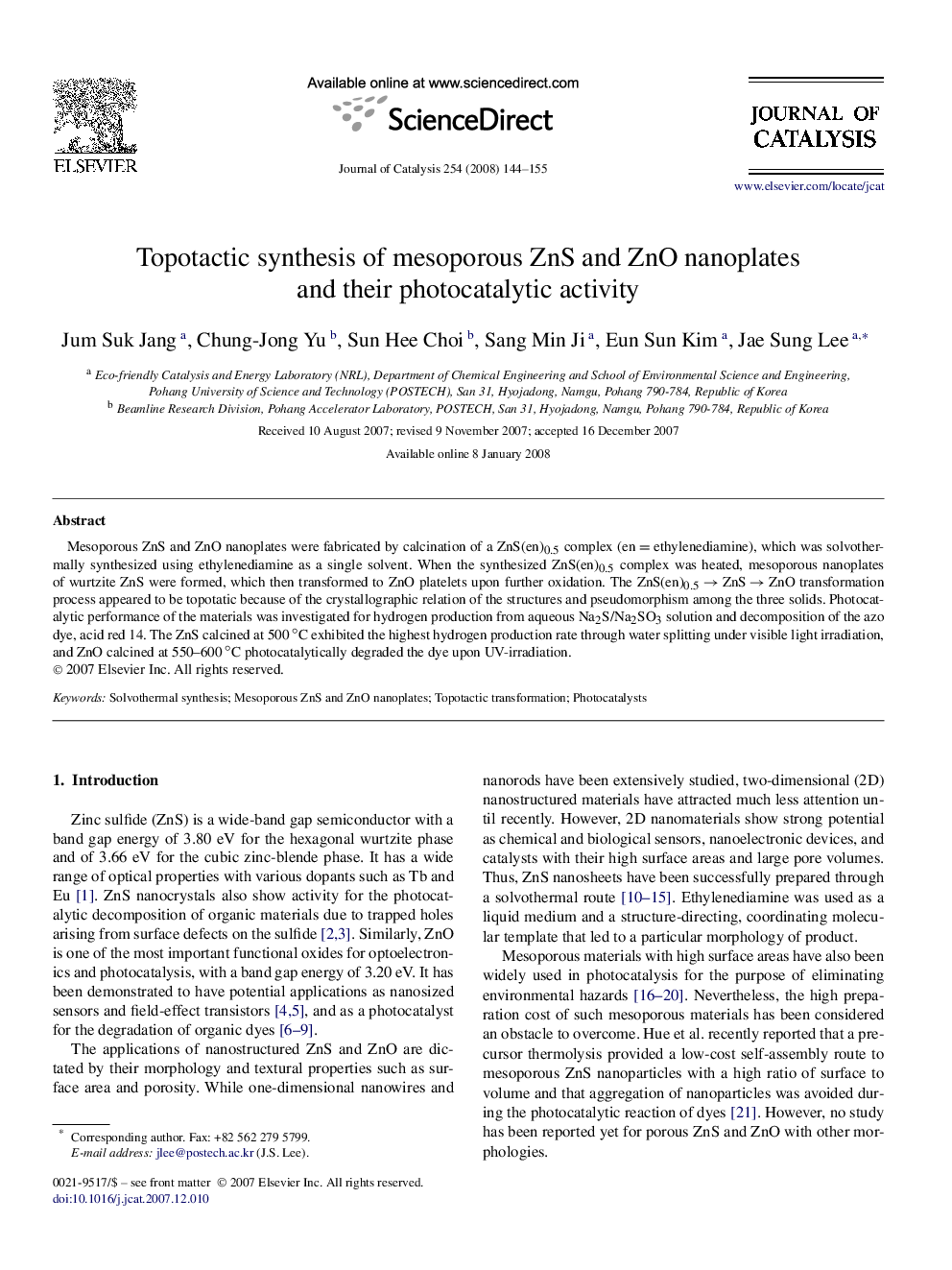| Article ID | Journal | Published Year | Pages | File Type |
|---|---|---|---|---|
| 62366 | Journal of Catalysis | 2008 | 12 Pages |
Mesoporous ZnS and ZnO nanoplates were fabricated by calcination of a ZnS(en)0.5 complex (en = ethylenediamine), which was solvothermally synthesized using ethylenediamine as a single solvent. When the synthesized ZnS(en)0.5 complex was heated, mesoporous nanoplates of wurtzite ZnS were formed, which then transformed to ZnO platelets upon further oxidation. The ZnS(en)0.5 → ZnS → ZnO transformation process appeared to be topotatic because of the crystallographic relation of the structures and pseudomorphism among the three solids. Photocatalytic performance of the materials was investigated for hydrogen production from aqueous Na2S/Na2SO3 solution and decomposition of the azo dye, acid red 14. The ZnS calcined at 500 °C exhibited the highest hydrogen production rate through water splitting under visible light irradiation, and ZnO calcined at 550–600 °C photocatalytically degraded the dye upon UV-irradiation.
